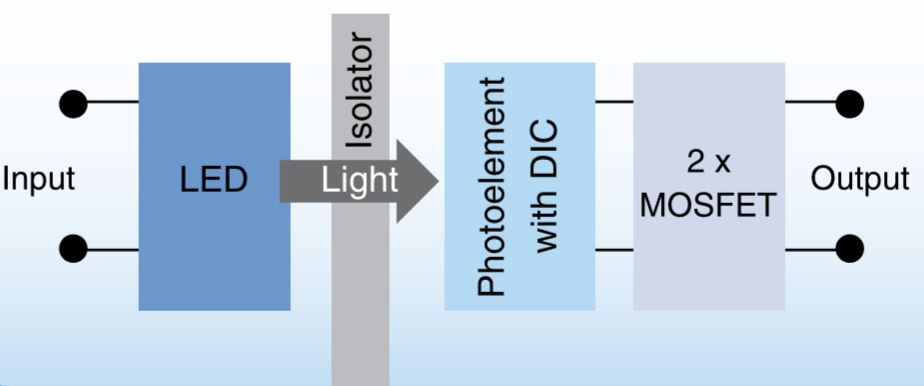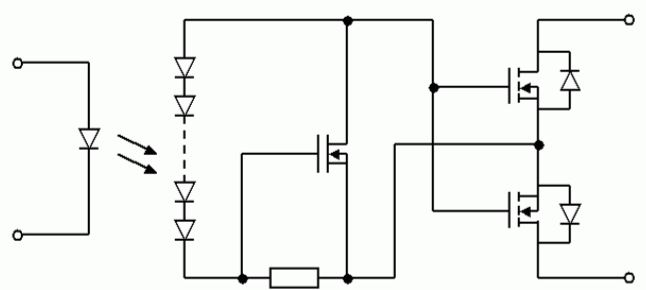In many applications, Solid-State Relays (SSRs) are replacing Electromechanical Relays (EMR) due to their unparalleled features, such as long life, low noise, and high reliability, etc. When design engineers are at the development stage of selecting relays, they often not only look at the reliability and performance, but also many other factors, lower power consumption, small dimensions, fast switching speed and no contact bounce, which are all advantages that Solid-State relays can have over the traditional EMRs.
Now, one new type of Solid-State Relay has been added to electrical engineers’ selection lists, which is the Panasonic PhotoMOS relays. This new Solid-State relay distinguishes itself from the other SSRs by using optical principle other than electrical or magnetic methods. The operating principle of PhotoMOS is shown in the diagram below. The input stage of the PhotoMOS consists of a light emitting diode (LED) that gives infrared light when the driving signal is applied. The light is then sensed by an array of photo-cells which are triggered to cause a voltage drop of about 10V across. The voltage drop is used to control the gate of two source-coupled DMOSFET transistors thus turns the output stage on or off. With the source coupled DMOSFETs, the switching of the output stage is bidirectional. The source-coupled DMOSFET in PhotoMOS is the key for their AC switching applications. To decouple the interconnection between the input and output stages, optical isolators are also implemented.


Read more at: https://www.panasonic-electric-works.com/eu/photomos-relays.htm



